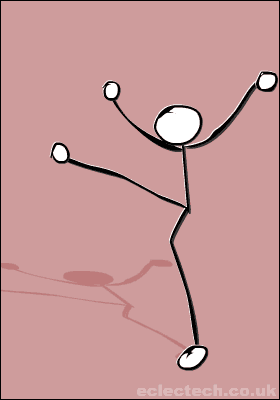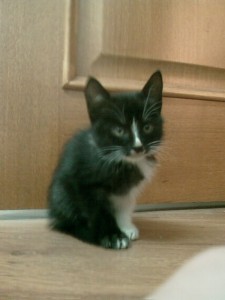I used to pay attention to wind chill—not because I actually cared, but because it gave me a much lower temperature to brag about having braved. It was hard to remember the right numbers, though, so I gave up after a while. Besides, I found it was easier to tack on ‘…and that’s without the windchill!’ And as it turns out, wind chill calculations are basically pointless, anyway.
Having lived in ever-colder climates (NE Ohio, Wisconsin, Changchun, Haerbin), though, I’ve always realized the utility of effectively communicating frigidity.
I mean, temperature is standard, but anyone who has lived in a cold place can tell you it has some shortcomings when trying to make others respect your hardiness. How do you make someone feel the difference between 15° and -15°?Obviously, the numbers are different, but they belie the vast experiential shift accompanying that minus sign. Plus, to blend into my non-US environment, I’ve adapted to the noting temperatures in Centigrade, which few Americans bother trying to understand. So we need new scales.
Some people try to explain their cold in experiential terms. I felt ‘like my feet were about to fall off’ or ‘chilled to the bone’ tell us you suffered, but we can’t know how much. For starters, these are only figures of speech. Your feet are still securely attached at the ankle, I’ll presume, and I rather doubt your muscles and subcutaneous fatty layers had failed to properly insulate your skeletal system, substantial though they may be (one or the other, that is). But more to the point—you’re probably just whiny anyway.
Thus I officially call for a sensory chill index (SCI).
Remember that scene in Farmer Boy when they tossed a bucket of water into the air and it would freeze before it hit the ground? That, my friends, is an SCI—something that instantly tells people exactly how the cold is affecting you in a way we can all appreciate.
As you live in colder climes, you develop an innate ability to note cold. It’s not exactly magic, but it almost seems like it. It’s actually just observing various phenomena. The goal of an SCI would be to quantify some of those phenomena.
Here is some groundwork:
- Frozen noses. We’re not talking about your nose’s feeling cold here. No, I’m literally referring to the actual freezing of the fluid in your nose. A relatively recent post on some (southern-bred) friends’ blog noted their surprise when they found their noses freezing this winter. It brought back college days. Cold days were when your nose froze at first breath; when the freeze set in at Carey Dorm, you were experiencing just another winter day and making it to the all the way to the library with mobile nose hairs meant conditions were practically balmy.
- Snow crunch to squeak ratio. Obviously, warm snow is melty and slushy. I’ve not seen that kind of snow before late April in many a year. I take it for granted that tromping through new-fallen snow sounds something like squishing a bag of corn starch. But when it gets cold, the crunch that renders autumn leaves sensually vapid gives way to a sharp squeak. If you don’t know what I’m talking about, don’t ever try to tell me you have felt cold.
- Longevity of visible breath. We all know what it’s like to see your breath. But, as it gets colder, that breath turns into a sort of ethereal scarf. Or it leaves a long trail, as if people were tiny jet engines on a clear summer day. The longer the trail, the colder it is.
- Watery eye meltdown. I don’t think we can count eyes’ watering as a reliable indicator, since that varies dramatically from person to person. Shed tears are generally going to respond to conditions pretty reliably though, I’ll warrant. So did your tears drip from your nose, form a mini-icicle there, add icy war paint to your cheeks or threaten to seal your eyelids shut?
I’m no scientist, but I think this could be a start. Care to contribute?
*Sorry for a long post with no picture, but at the speed my internet is working now, a single picture would add a good hour to the already too-long posting process. Besides, it gives you a chance to exercise your imagination.
 Why do Americans eat more chicken than pork?
Why do Americans eat more chicken than pork?
 Pardon me.
Pardon me.